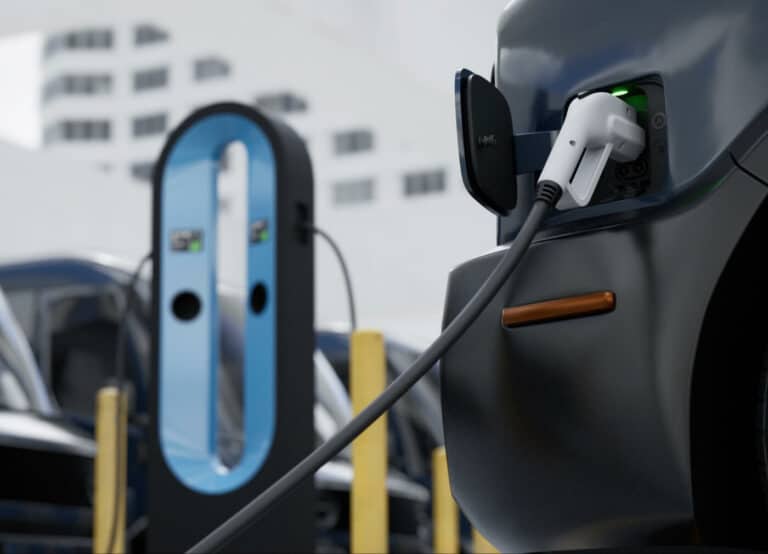By Kevin Kushman, CEO, Electrada
From individual passenger cars to large commercial fleets, total cost of ownership (TCO) is a critical factor in vehicle selection and management, and, notably for commercial fleets, is the difference between a positive and negative financial impact on operations. TCO encompasses fixed costs like vehicle acquisition, taxes, insurance, and depreciation, as well as variable expenses tied to vehicle propulsion systems, repair, maintenance, routing and especially, fuel.
In recent years, commercial fleet managers have adopted sophisticated tools, such as vehicle telemetry and advanced routing software, to enhance efficiency, safety, and cost savings. Yet, the shift to electric vehicle (EV) fleets introduces new variables and new potential cost exposure in the quest to optimize operations. This transportation revolution demands fresh strategies, particularly around batteries, charging infrastructure, and route optimization.
Battery Strategies
While EVs benefit from simpler propulsion systems and lower maintenance requirements than internal combustion engine (ICE) vehicles, battery costs remain a major hurdle. Despite the U.S. Department of Energy reporting a nearly 90% decline in lithium-ion battery pack costs between 2008 and 2022, battery expenses still dominate TCO for EVs. Batteries also require careful management and, with 8-year warranties being commonplace, their lifespan may not fully match the cab and chassis longevity of commercial vehicles. As a result, EV trucks in medium- and higher-duty classes may cost nearly double that of their diesel counterparts.
To mitigate the battery cost impact on TCO, rightsizing the vehicle’s battery capacity is crucial. For example, last-mile delivery vans, with predictable, shorter routes near charging hubs, need smaller, less costly battery packs compared to long-haul trucks with higher energy demands. Battery refurbishing and repurposing are emerging as potential cost-saving measures as the industry matures. Batteries with reduced capacity (around 80% of their original) can be repurposed for energy storage at charging stations, and eventually, recycled for valuable minerals, contributing to environmental sustainability.
Charging Infrastructure
Unlike diesel or gas vehicles, EV fleets depend on dedicated charging infrastructure, requiring significant capital investment. Fleet operators also face unpredictable electricity pricing, adding further complexity. Building proprietary charging systems may seem like a solution, but it risks unnecessary overbuild of infrastructure and technology obsolescence, leading to inefficiencies and a multi-year drag on TCO.
A clear risk-mitigating alternative is the use of “charging-as-a-service” (CaaS) models, where fleets engage third-party providers to plan, design and manage charging infrastructure under fixed contracts. This shields operators from high upfront costs and volatile electricity prices, offering a scalable and predictable solution similar to conventional fuel networks, but with the significant advantage of bringing the fuel to the fleet depot itself, where integration to operating rhythms provides for fueling during vehicle depot dwell times. As these networks expand, collaboration among providers will ensure broader access, especially for long-haul trucks where range anxiety remains a concern.
Route Optimization
For EV-powered fleets, precise route planning becomes even more crucial than with ICE vehicles. Route efficiency now hinges on charging requirements and station availability. AI-augmented solutions are already enabling smarter charging strategies, with systems calculating the optimal charging capacity and timing based on route length and electricity prices. These fleets can also support grid stability by returning excess energy during peak demand periods.
Looking ahead, AI-powered fleet management will further improve operational efficiency. Modern telematics, predictive maintenance, and smart traffic systems will evolve to accommodate mixed fleets, refining vehicle routing, driver behavior analysis, and maintenance schedules. These advancements will be especially beneficial as fleets transition to EVs with varying range and charging needs.
Scalability: The Key to Success
For commercial EV adoption to thrive, scalability is essential. The appeal of CaaS lies in its ability to allow fleets to utilize only the charging infrastructure they need, making it a cost-effective solution, similar to cloud computing capacity via AWS or Azure. As EV fleets grow, we can expect similar scalable solutions in areas like battery refurbishing, repurposing, and maintenance. By optimizing total cost of ownership, fleets will not only enhance their bottom line but also accelerate the shift toward a cleaner, greener future.

Kevin Kushman is CEO of Electrada, a developer, owner and operator of electric vehicle charging infrastructure.











